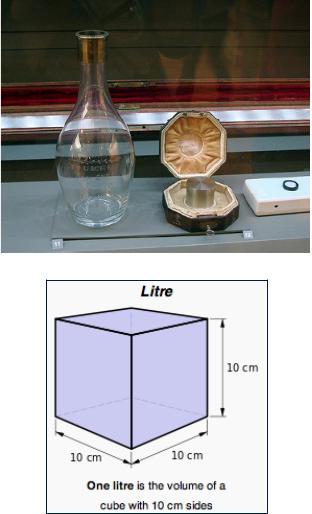
Mini-course 1 Decision Analysis (Dr. Mariya Sodenkamp) / Class 5 / ITB_L5_ 2015_04_27
.pdfStep 2: Build pair comparison matrices for all elements with respect to the upper level elements
1.
2.
3.
4.
5.
AHP utilizes pairwise comparisons to measure judgments regarding:
four criteria in terms of contribution of each toward the GOAL;
three alternative cars in terms of CRITERION Price;
three alternative cars in terms of CRITERION Maintenance three alternative cars in terms of CRITERION Horse-Power three alternative cars in terms of CRITERION Fuel Consumption
Purpose of Comparing Criteria
² Perform Pairwise Comparisons to develop relative weights on criteria hierarchy
² Facilitating discussion during voting to reveal stakeholder viewpoints and positions
² Defining consensus and how to use it in support of prioritization
² Consistency and Alignment among decision-makers is measured as a result of their comparisons
Source: decisionlens.com

Do Numbers Have an Objective Meaning?
The basis of most scales is arbitrary…
In 1889, the first Conference Generaledes Poidset Mesures(CGPM) sanctioned the international prototype of the kilogram, made of platinumiridium, and declared: This prototype shall henceforth be considered to be the unit of mass.
The third CGPM (1901), in a declaration intended to end the ambiguity in popular usage concerning the word weight, confirmed that:
The kilogram is the unit of mass; it is equal to the mass of the international prototype of the kilogram. The International Prototype Kilogram (IPK) kept in Serves, near Paris, is the standard of mass. National prototype kilograms are maintained in several countries and periodically checked against the International Prototype.

Pairwise Comparison Judgments
Pairwise comparisons is the basis of the AHP. The decision maker has to compare all elements of one level with respect to each related element at the higher level.
To begin the comparison process, start at the top of the hierarchy and compare criteria with respect to the goal.
To establish priorities of the four criteria, the decision maker is
asked to state evaluations of criteria importances when the criteria are considered two at a time (pairwise).
|
|
|
|
|
|
comparisons, |
Horse-power |
Fuel |
|
|
Price |
Maintenance |
||
|
|
|
|
consump3on |
Price |
|
X |
X |
X |
|
|
|
|
|
Maintenance |
|
|
X |
X |
|
|
|
|
|
Horse-power |
|
|
|
X |
|
|
|
|
|
Fuel consump3on |
|
|
|
|
|
|
|
|
|
Pairwise Comparison Judgments (cont’d)
Pairwise comparisons of the elements at each level are made in terms of either:
• Importance—when comparing objectives or players with respect to their relative importance.
• Preference—when comparing the preference for alternatives with respect to an objective.
• Likelihood—when comparing uncertain events or scenarios with respect to the probability of their occurrence.

Pairwise Comparison Judgments (cont’d)
To fill the matrix of pairwise comparisons we use numbers to represent the relative importance of one element over another with respect to the property.
We ask: what is more important – Price or Maintenance with respect to the GOAL? How much more important?
The same question is asked regarding relative importance of Price vs. Horse-Power, Price vs. Fuel Consumption, Maintenance vs. Horse-Power, Maintenance vs. Fuel Consumption, as well as Horse-Power vs. Fuel Consumtion.
|
Price |
Maintenance |
Horse-power |
Fuel consump3on |
|
|
|
|
|
Price |
|
X |
X |
X |
|
|
|
|
|
Maintenance |
|
|
X |
X |
|
|
|
|
|
Horse-power |
|
|
|
X |
|
|
|
|
|
Fuel consump3on |
|
|
|
|
|
|
|
|
|

The Fundamental Scale
Numerical Ranking |
Verbal explana3on |
|
|
1 |
Equally preferred / important |
|
|
2 |
Equally to moderately |
|
|
3 |
Moderately preferred /more important |
|
|
4 |
Strongly to moderately |
|
|
5 |
Strongly preferred /more important |
|
|
6 |
Verystrong to strong |
|
|
7 |
Very strong preferred /more important |
|
|
8 |
Extremely to Strong |
|
|
9 |
Extremely preferred /more important |
|
|

Comparison Matrix for Criteria
|
Price |
Maintenance |
Horse-power |
Fuel |
|
|
|
|
consump3on |
|
|
|
|
|
Price |
|
5 |
7 |
3 |
|
|
|
|
|
Maintenance |
|
|
2 |
|
|
|
|
|
|
Horse-power |
|
|
|
|
|
|
|
|
|
Fuel consump3on |
|
2 |
4 |
|
|
|
|
|
|
v v v v v
v
Price is Strongly more important (5) than Maintenance Price is Very strong more important (7) than Horse-Power
Price is Moderately more important (3) than Fuel Consumption Maintenance is Equally to moderately more important (2) than Horse-Power
Fuel Consumption is Equally to moderately more important (2) than Maintenance
Fuel Consumption is Strongly to moderately more important (4) than HorsePower

Filling the Comparison Matrix
|
Price |
Maintenance |
Horse-power |
Fuel |
|
|
|
|
consump3on |
|
|
|
|
|
Price |
1 |
5 |
7 |
3 |
|
|
|
|
|
Maintenance |
1/5 |
1 |
2 |
1/2 |
|
|
|
|
|
Horse-power |
1/7 |
1/2 |
1 |
1/4 |
|
|
|
|
|
Fuel consump3on |
1/3 |
2 |
4 |
1 |
|
|
|
|
|
v
v
Pairwise relation of all the elements on the main diagonal is always 1.
For the remaining pairwise comparisons, reciprocal preference ratings must be used.
For example, relation of Price and Maintenance is:
|
|
Price |
|
= 5 |
||
|
|
Maintenance |
||||
therefore, |
|
Maintenance |
1 |
|
||
|
|
|
|
|
|
|
|
Price |
= 5 |
|
|||
|
|
|
||||
Exercise: Outsourcing Partner Selection
|
Vendor A |
Vendor B |
Vendor C |
|
|
|
|
Supplier's |
130 |
150 |
110 |
suggested price, |
|
|
|
euro |
|
|
|
Distance, km |
12,000 |
3,500 |
10,000 |
|
|
|
|
Organizational |
good |
excellent |
satisfactory |
behavior |
|
|
|
Adaption with |
complete |
partial |
complete |
the purchaser‘s |
|
|
|
procedures |
|
|
|
Based on the information above, which vendor is the most preferred (using the AHP)?
Step 2: Construct pairwise comparison matrices…
